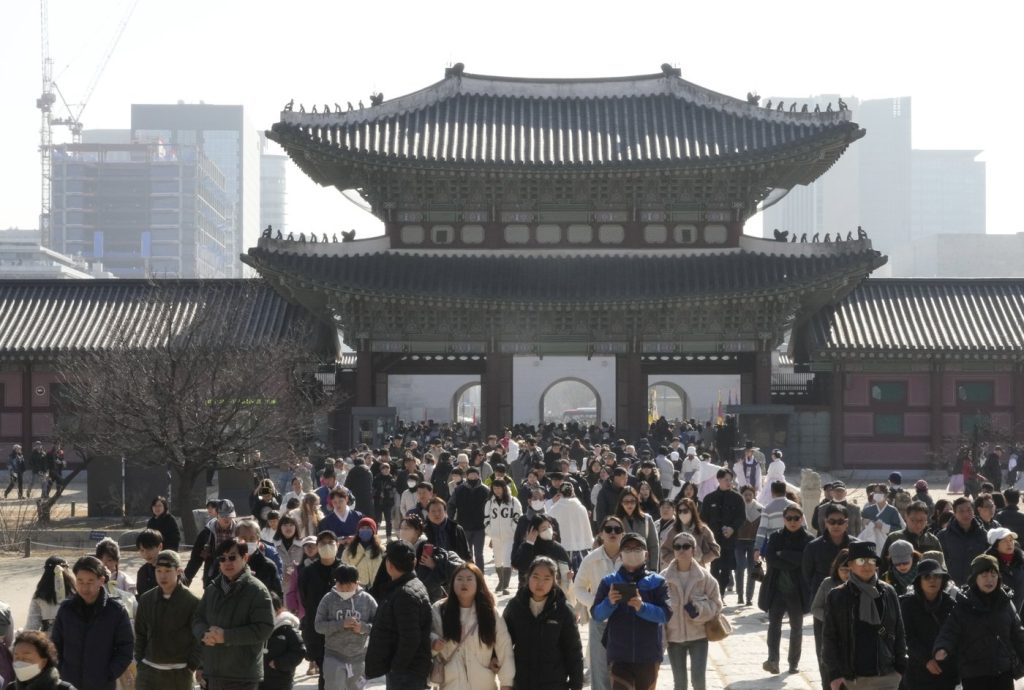BEIJING (AP) – An increasing number of countries are grappling with the dual challenges of population decline and aging demographics. This trend is largely driven by younger generations opting for smaller families and advancements in healthcare that extend life expectancy. In 2024, China announced a decrease in its population for the third consecutive year, with a decline of nearly 1.4 million, bringing the total to 1.408 billion. In Asia, Japan's population has been declining for 15 years, while South Korea experienced negative growth starting in 2021. Meanwhile, Italy has seen its birth rate fall below 400,000 for the first time since the late 1800s.
The United Nations reports that populations have peaked in 63 countries and territories, with around half located in Europe. Additionally, the U.N. predicts that another 48 countries will reach their population peak within the next 30 years. Overall, while the global population currently stands at 8.2 billion, it is projected to grow to 10.3 billion in approximately 60 years before starting to decline.
In response to the challenges posed by shrinking populations, many affected countries are implementing financial incentives to encourage higher birth rates. Japan has seen a population decrease of 3 million since 2008, prompting Chief Cabinet Secretary Yoshimasa Hayashi to label the demographic situation as "critical." The population peaked at 128 million in 2008 and has since fallen to 125 million, with births reaching a record low of 730,000 in 2023. Surveys indicate that younger Japanese are increasingly hesitant to marry and raise children, influenced by poor job prospects and a rising cost of living that outpaces salary increases.
Japan's projected population by 2070 is expected to drop to 87 million, with four out of every ten individuals being 65 or older. Conversely, the foreign resident population in Japan has risen by 11%, exceeding 3 million in 2023 and making up nearly 3% of the total population.
In China, the government is aware of the looming challenges associated with aging and shrinking populations. The country is aging rapidly, which poses risks to economic growth and the government’s capacity to support a larger elderly demographic with a diminishing workforce. Initiatives such as “elderly universities” in Beijing have emerged, where retirees engage in activities like dance and yoga. Although such businesses have yet to break even, there is optimism due to the value placed on quality of life among retirees born in the 1960s.
To combat demographic issues, China is slowly increasing the retirement age to 63 for men and to 55 for women in blue-collar jobs over the next 15 years. Despite a relaxation of the one-child policy to permit up to three children per family, the number of births continues to drop, contributing to China's population decrease, which ceded its position as the most populated country to India in 2023.
Italy faces similar challenges, with Pope Francis urging Italians to increase their birth rates. The Italian government, supported by the Vatican, aims to reverse a declining demographic trend that has seen the number of births decline from approximately 577,000 in 2008 to 380,000 in 2023. This decline is attributed to a combination of factors, including a lack of affordable childcare options and low salaries, coupled with societal expectations for women to care for elderly family members.
South Korea has experienced a partial population rebound in 2023, primarily due to an influx of foreign residents. Although the birthrate continues to decline, the number of foreign nationals increased by 10%, partly due to an extension of a working visa program. As a result, South Korea’s overall population has slightly risen by 0.2% to 51.8 million, with concerns regarding labor shortages and the government's budget arising from demographic shifts.










